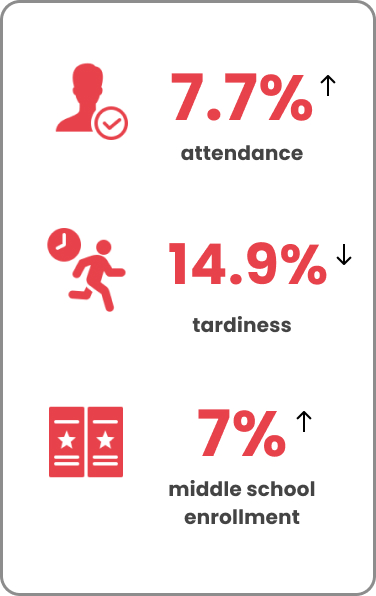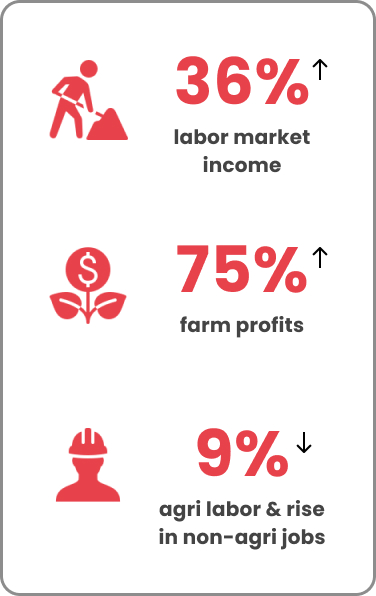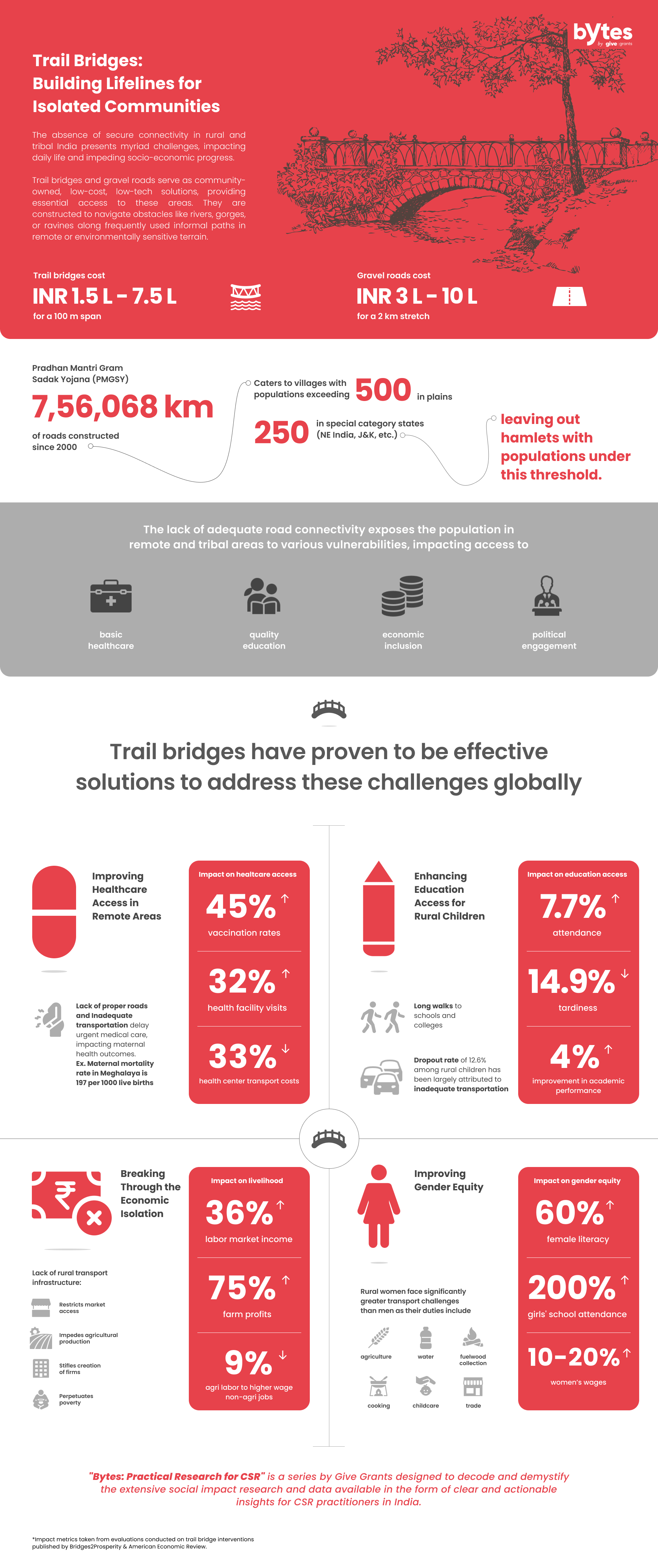

“Bytes: Practical Research for CSR” is a series by Give Grants designed to decode and demystify the extensive social impact research and data available in the form of clear and actionable insights for CSR practitioners in India.”
Since 2000, India has added 7,56,068 km of roads, with 20% (1,25,778 km) achieved in the last decade. Yet, certain rural and tribal regions grappling with terrain and population density challenges await this essential infrastructure.
The Pradhan Mantri Gram Sadak Yojana (PMGSY) has been instrumental in connecting over 1,63,000 hamlets (~23% of all villages) nationwide by constructing all-weather roads. By design, it caters to villages with populations exceeding 500 in plains and 250 in special category states (North Eastern States, Jammu & Kashmir, Himachal Pradesh, and Uttarakhand), leaving out hamlets with populations under this threshold.
The absence of secure connectivity in rural and tribal India presents myriad challenges, impacting daily life and impeding socio-economic progress. Trail bridges and gravel roads serve as community-owned, low-cost, low-tech solutions, providing essential access to these areas. Trail bridges are constructed to navigate obstacles like rivers, gorges, or ravines along frequently used informal paths in remote or environmentally sensitive terrain, and come at a cost ranging from INR 1,50,000 to INR 7,50,000 for a 100-meter span, depending on width and primary material. Similarly, a 2 km stretch of gravel road may cost between INR 3,00,000 and INR 10,00,000.
Empowering Remote Communities through Trail Bridges
& Gravel Roads
The exclusion of smaller hamlets from PMGSY exposes their population to various vulnerabilities, impacting access to healthcare, quality education, economic inclusion, and political engagement. By ensuring reliable and secure passages, trail bridges significantly reduce travel times, granting residents easier access to vital services such as healthcare, education, and markets. This enhanced connectivity not only enhances the daily lives of these communities but also fosters economic growth and social inclusivity.
Globally, organizations like Bridges2Prosperity (B2P) and Helvetas have been leading efforts to empower isolated communities through trail bridges and rural roads. Their successful initiatives across South America, Africa, and neighboring Nepal serve as inspiring examples, while Goonj has undertaken similar work in parts of India.
The design and materials used in trail bridges can vary widely, from simple wooden footbridges to elaborate steel or concrete structures with factors such as location, terrain, expected usage, and available resources dictating the design and construction approach.
Improving Healthcare Access in Remote Areas
Long travel times and inadequate transportation significantly affect maternal health and emergency care in remote areas. For instance, Meghalaya has one of the largest number of villages without road connectivity and struggles with a maternal mortality rate as high as 197 (per 1000 live births). The State Health Department believes that inadequate transport availability and poor road conditions delay urgent medical care, impacting maternal health outcomes.
B2P’s evaluation of trail bridges and roads has found a record 45% increase in vaccination rates, a 32% increase in health facility visits, and a 33% decrease in health center transport costs.

Enhancing Education Access for Rural Children
Many rural children are forced to undertake long walks to primary school and even greater distances for higher grades. Inadequate transportation options, coupled with unaffordable private alternatives, contribute to early school dropout rates, underscoring challenges of accessibility, welfare, and equity in accessing public services. According to Ministry of Education’s UDISE+ data for 2021-22, the dropout rate among rural children stands at 12.6% for secondary schools, with inadequate transportation identified as a key factor.
B2P’s projects recorded a 7.7% increase in attendance in the first two years following bridge construction and a 14.9% reduction in tardiness. The study also recorded a 4% improvement in academic performance in the first year following construction among students in Rwanda. In India, a VOXDEV study conducted in Rajasthan revealed that road connectivity led to a 7% increase in middle-school enrollment, along with enhanced student participation and performance on standardized tests.

Breaking Through the Economic Isolation
The lack of rural transport infrastructure restricts market access, impedes agricultural production, stifles the creation of firms, and perpetuates poverty. Essentially, it hinders the movement of goods and people, severely limiting the economic potential of isolated regions. Many isolated communities rely on agriculture as their main source of income. Research indicates that rural farmers often struggle with limited market access, which can severely constrain the resources and inputs they need, ultimately reducing their agricultural output.
However, communities in Rwanda and Nicaragua that had built trail bridges and gravel roads experienced remarkable outcomes, recording a 36% increase in labor market income and a 75% increase in farm profits. Their bridges paid for themselves over 3 years. Similarly, in India, a study published in the American Economic Review has found evidence of diversification of the workforce and a 9% reduction in agricultural labor. The agricultural workforce transitioned to non-agri jobs outside the village with better wages. However, the exact wage scale was not specified in their study.

Women reap disproportionately higher benefits from trail bridges
Rural women face significantly greater transport challenges than men as their duties include agriculture, water and fuelwood collection, food preparation, childcare, and going to the nearest markets for sale and purchase of necessary products, all of which require extensive travel. This transport burden, combined with cultural and economic factors, limits their labor force participation, affecting both their personal welfare and broader community development.
However, the connectivity that is provided through trail bridges and gravel roads has generated greater gains for women in the community compared to men. The B2P evaluation has recorded a 60% increase in female literacy and a 200% surge in girls’ school attendance. Additionally, there has been a 10-20% rise in women’s wages. This enhanced access has led to a 60% increase in female workforce participation and a 30% overall household income boost in Rwanda and Nicaragua.
Leveraging CSR: Transforming Communities through Trail Bridges
Investing in trail bridges and gravel roads in rural and tribal areas of India is a low-cost, high-impact opportunity to drive sustainable development and uplift isolated communities. These initiatives have demonstrated remarkable impact, improving access to essential services, enhancing education outcomes, empowering women, and boosting economic prosperity. By prioritizing funding for such connectivity programs, we can make a tangible difference in the lives of millions, fostering resilience, inclusivity, and long-term prosperity in some of India’s most underserved regions.
References
- https://omms.nic.in/
- PMGSY, Guidelines 2019
- Estimates for a bamboo bridge
- Traveling Towards Disease: Transportation Barriers to Healthcare Access
- Meghalaya Health Policy 2021
- B2P: Empowering Communities and Connecting Paths
- Dropout Rates in Schools in India: An Analysis of UDISE+ 2021-22 Data
- B2P: Trail bridges & education
- Road connectivity and rural economic development: Evidence from India’s rural roads programme, VOXDEV 2022
- Rural Transportation Infrastructure in Low- and Middle-Income Countries: A Review of Impacts, Implications, and Interventions
- Farmers’ Perceptions of the Effect of Rural Transportation Systems on Farming Income in Ondo State, Nigeria
- Eliminating Uncertainty in Market Access: The Impact of New Bridges in Rural Nicaragua
- Rural Roads and Local Economic Development | American Economic Review
- Gender issues and rural transport
- B2P: Empowering Communities and Connecting Paths
An infographic representation of the transformative power
of trail bridges



